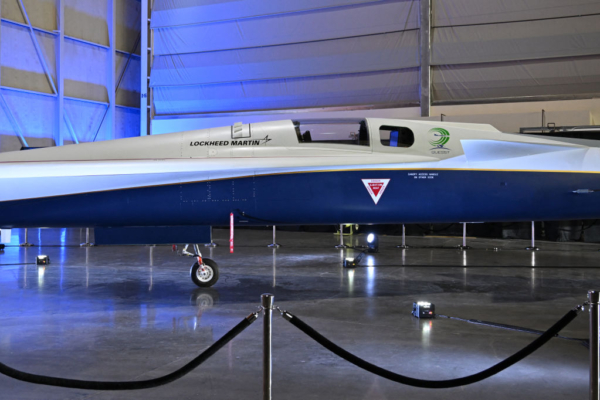NASA and Lockheed Martin recently successfully test flew a quiet supersonic jet, opening the door to high-speed commercial aviation and making it possible for ordinary people to travel faster than the speed of sound.
On Tuesday, October 28, the X-59 aircraft flew from Lockheed Martin’s facilities in Palmdale, California to NASA’s Armstrong Flight Research Center in Kern County, California.
According to NASA, the first flight took place at low altitudes at a speed of approximately 240 miles per hour (386 kilometers per hour) to verify system integration. This marks the beginning of the flight test phase, which will focus on verifying the aircraft’s airworthiness and safety.
Future test flights are expected to fly higher, faster, and eventually break the sound barrier.
The X-59 aircraft is reported to be 100 feet long (30.5 meters) and 30 feet wide (9.1 meters), with an innovative design aimed at mitigating the restrictions of loud noise. Its conical nose is designed to reduce the impact wave that typically causes sonic booms, allowing it to fly at speeds exceeding 925 miles per hour (1526 kilometers per hour) with a streamlined design.
Previously, the United States and other countries have banned supersonic jet flights due to the sonic booms that scare communities and people on the ground when they fly faster than the speed of sound. This strong noise has been a major obstacle that the X-59 seeks to overcome.
According to The Hill, Nils Larson, NASA’s chief test pilot for the X-59, expressed before the first test flight, “Flying a new aircraft requires a lot of trust. You need to trust the engineers, maintenance personnel, designers—everyone who has been in contact with this aircraft. If I’m not confident, I won’t go up. But if they trust this aircraft and trust me to pilot it, then I will give it my all.”
Contract data quoted by Reuters showed that NASA, which has borne the development costs since 2018, has paid Lockheed Martin over $518 million for the development and demonstration of the X-59 prototype.
Transportation Secretary Sean Duffy, who also serves as acting NASA administrator, commented that the supersonic jet represents “an emblem of American ingenuity.”
In a statement from Lockheed Martin, Duffy stated, “The American spirit knows no bounds. It is part of our DNA – we desire to fly farther, faster, and even more quietly than anyone else.”
Duffy further noted, “This work maintains America’s position as a leader in the aviation sector and has the potential to change the way people fly in the future.”

